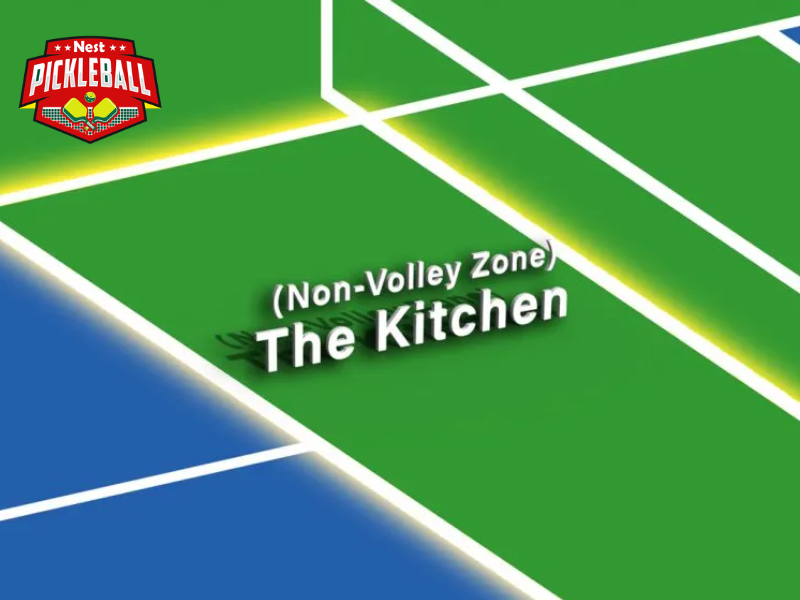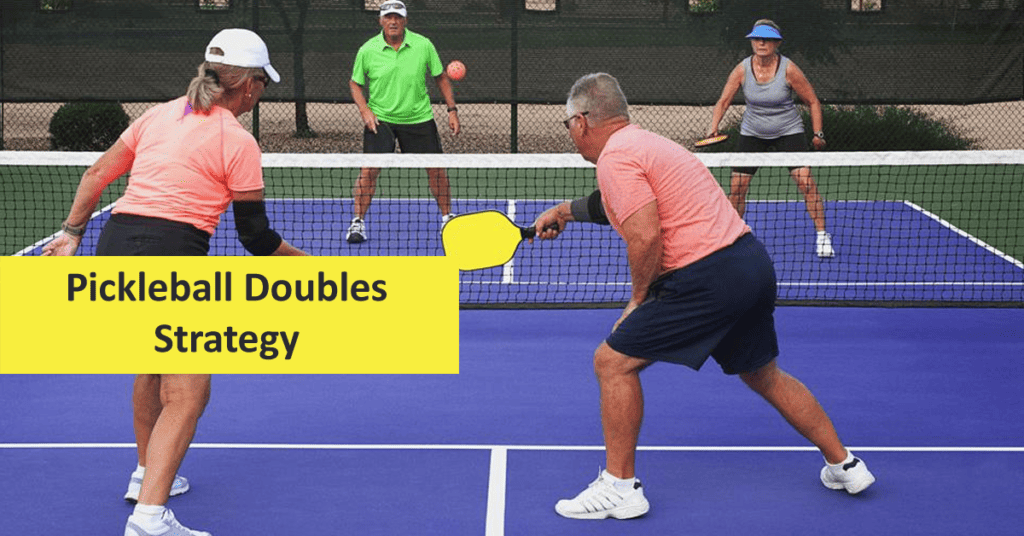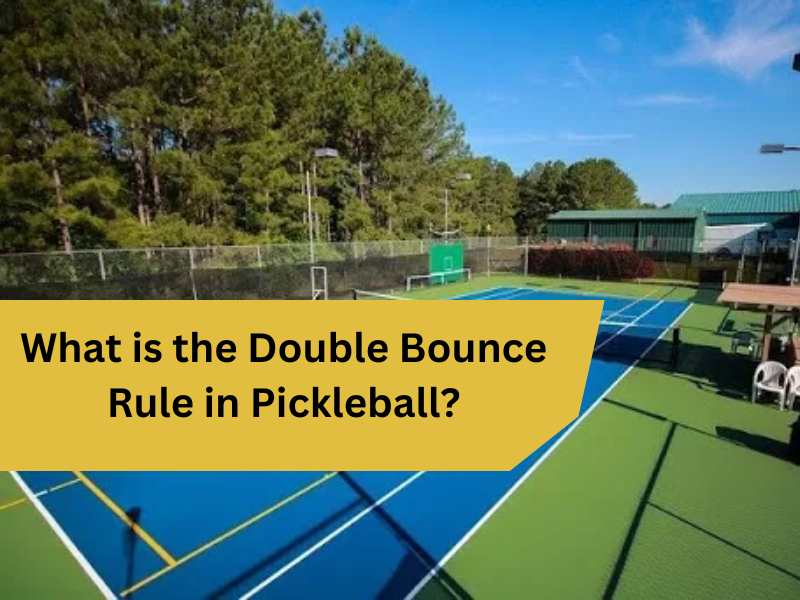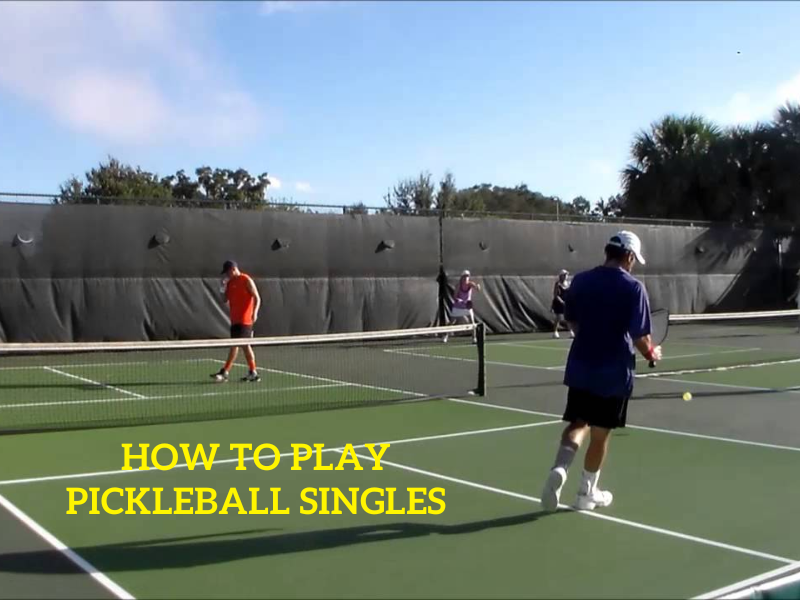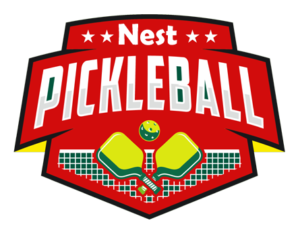The rules of pickleball have evolved, and the non-volley zone is one of those changes. I will explain why many players think this rule is unfair to the opponent and the pickleball non volley zone rules.
The non volley zone pickleball is within 7 feet on both sides of the net. Players are not allowed to volley or hit the ball in this zone. This rule ensures players cannot execute powerful smashes from within the non-volley zone.
It can be hard to break through the noise of all that is happening around you, and sometimes it is easier to understand the game of pickleball by learning how to play by the rules.
What is the Pickleball Non-Volley Zone?
The non-volley zone is a 6-foot by 18-foot area surrounding the pickleball court that is off-limits to the opponent. This area can be used for strategic positioning, passing, or throwing balls to teammates.
Pickleball has three main zones: the service zone, the middle zone, and the non-volley zone. You must hit the ball into the opponent’s court to score points in the service zone. You can hit the ball anywhere in your opponent’s court in the middle zone. The non-volley zone is where you cannot hit the ball.
What is a Volley in Pickleball?
A volley in pickleball is a scoring technique used to gain an advantage over the opponent. To volley, you hit the ball off the back wall so it bounces high in the air and then hits the front wall and rebounds to you. This gives you a second chance to hit the ball; if you hit it this time, it is a point.
It is the skill of hitting the ball into the opponent’s court with as much power and accuracy as possible. A good volley will put your opponent on the back foot, allowing you to take the lead in the game.
There are a few key points to remember when volleying in pickleball:
- Stay low to the ground when you hit the ball.
- Use your wrists to send the ball high into the air.
- Stay aware of who is behind you and where their ball may be.
What is a Groundstroke in Pickleball?
In pickleball, a groundstroke is a shot played by striking the ball with the bottom of the paddle before it has reached the top of the opponent’s court. This shot often gives your opponent more trouble than other shots, as it can be difficult to control and place.
A groundstroke in pickleball is a shot played using a spoon as a bat. It is considered one of the most powerful shots in the game and can be challenging to block.
A good groundstroke starts with a strong backhand hit that gets deep into the opponent’s court. You follow up with a forward swing as close to the frontcourt line as possible.
Pickleball Non-Volley Zone Rules 2023
The non-volley zone in pickleball, commonly referred to as the “kitchen,” plays a pivotal role in the game, with specific rules designed to increase the sport’s strategic complexity and distinct character.
As of 2023, the pickleball non-volley zone rules 2023 maintain the essence of the game by preventing players from executing volleys—that is, hitting the ball before it bounces—while standing within this seven-foot area adjacent to the net on either side.
This rule essentially means that a player cannot enter the kitchen to hit a ball in the air; they must let the ball bounce first if they are within this zone. The purpose of the non-volley zone is to avoid the dominance of aggressive net play and to promote a game that also includes longer rallies and strategic placement of shots.
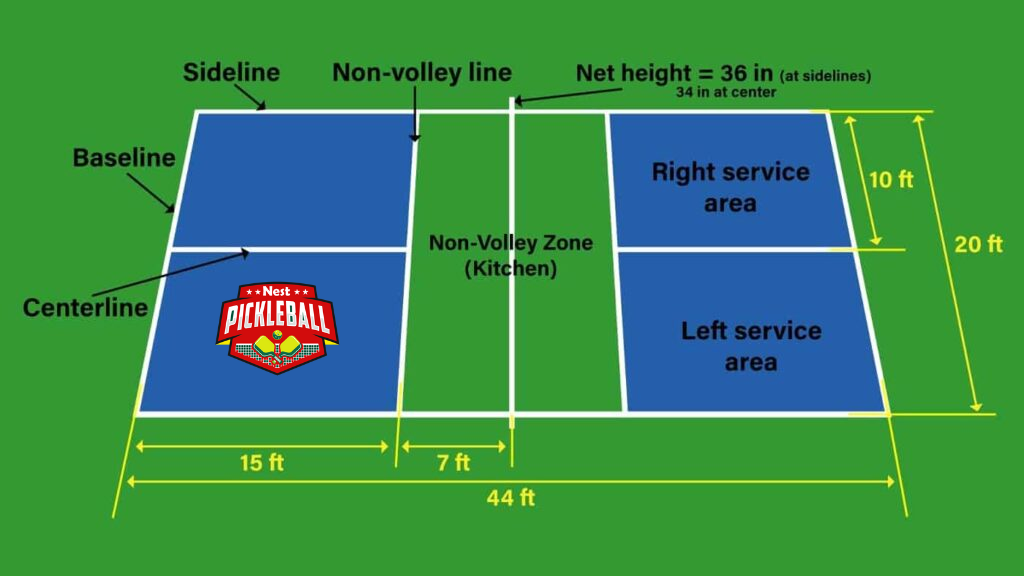
Here are some Pickleball non-volley kitchen rules 2023 to help you get started:
- Do not play pickleball if you are uncomfortable with any of the following.
- Clean your hands before handling the ball.
- Don’t hit the ball with your elbow or wrist
- Don’t hit the ball with your hand facing down.
- Play the ball as close to the ground as possible.
- Do not hit the ball with your hand or a hard object like a door knob.
- Keep your eye on the ball at all times.
- Do not hit the ball with your foot unless it is an intentional bounce-back pass.
- Keep your hands and arms inside the ball at all times.
- Do not run into or jump on other players’ balls.
No Volleys in the Non-Volley Zone
In pickleball, there’s a crucial rule about the Non-Volley Zone, often called the Kitchen line. This rule is simple: you must not volley the ball – which means hitting it before it bounces – while in contact with this zone or its line. The Non-Volley Zone’s name comes from this very rule.
If you volley while touching the Non-Volley Zone, or even if your equipment or partner touches it, that’s a fault. Common ways to commit this fault include:
- Stepping on or standing in the Non-Volley Zone or its line while volleying.
- Contacting anything or anyone in contact with the Non-Volley Zone during a volley.
- Dropping something like a paddle or hat into the Non-Volley Zone during a volley.
- Touching the zone with your paddle during the volley motion.
In tournaments, if you make this mistake, you’ll likely hear the referee call it a “Foot fault!” It’s essential to stay clear of this zone while volleying to avoid losing points.
Some Common Faults and Facts in Pickleball
-Fault 1: Not getting behind the ball. This can be due to a lack of court awareness or poor ball control.
-Fault 2: Not hitting enough balls in play. This can be due to a lack of aggression or a bad stroke technique.
-Fault 3: Not rotating properly. This can be due to incorrect footwork, improper backswing, or poor balance.
-Fault 4: Not throwing the ball enough to get it across the front court. This can be due to poor accuracy, a slow release, or an unwillingness to take risks.
-Fault 5: Not using the front wall to advantage. This can be due to a lack of power in your shots, not rotating properly, or not jumping high enough when attempting a hit over the front wall.
Faults Related Pickleball to Two-Foot Contact
If you’re playing football, basketball, or any other sport requiring two feet to contact the ground, you must be aware of some potential faults.
Here are four pickleball two-foot contact:
1. Foot Strike Fault
This is when your foot doesn’t land squarely on the ground, causing your body and the ball to move in different directions. This can lead to poor ball control and turnovers.
2. Knee Fault
When your knee doesn’t touch the ground completely, it creates friction between your shoe and the ground, which can cause you to lose balance and stability. This also increases your chances of getting injured.
3. Jumping Fault
When you jump, your body weight is suddenly transferred from one foot to another, which can cause fatigue and injury if not done correctly. Make sure to land softly, and with plenty of force so you don’t injure yourself or the person you’re trying to catch.
4. Overhead Movement Fault
When you try to do an overhead movement, such as a jump shot or dunk, ensure your body is in a straight line from head to toe, said “Darin Arkema.”

Three Common Myths About Non-Volley Zone Pickleball
There are a few common myths about non-volley zones, and each one has a bit of truth to it. Here are the three most common non-volley zone pickleball myths;
1. Ineffective at Stopping Runs
Research has shown that non-volley zones are very effective at stopping runs. They can be even more effective than traditional volleyball defense mechanisms like blocks and digs.
2. Non-Volley Zones Take too Much Time to Set Up
Setting up a non-volley zone is relatively easy. All you need are some cones and some balls. You can even set it up in minutes using just a couple of cones and balls.
3. Non-Volley Zones Don’t Work
Players love playing in non-volley zones because they offer a different challenge than the traditional volleyball game. Pickleball players have to think about different ways to score points, and they have to be creative when it comes to setting up plays in the zone.
More Related Faqs About Non-Volley Zone
What are you not allowed to do in the non-volley zone?
The non-volley zone is the area of the court that the players cannot reach during a volleyball game. A player who commits an infraction in a non-volley zone is awarded a Technical Delay by the Umpire on Play or, at his/her discretion, a Point.
Can you hit the ball in the air in the non-volley zone?
No. If the ball is hit in the air, it’s called a volley. Only if you hit the ball with no spin on it, and it ends up being a shot played by your opponent, can you play it as a non-volley shot.
Can a serve be volleyed before it bounces?
A serve can be volleyed after it bounces (see the rules in tennis), but it is not allowed before it returns to the server.
Wrapping Up
In case you haven’t heard, pickleball is becoming a popular sport. In fact, it has become so popular that there are now pickleball non-volley zone rules to ensure everyone can play the sport well.
These rules may not be perfect, but they should at least help keep things fair and ensure no one feels overpowered. So if you’re looking for a new sport to add to your repertoire, check out pickleball and see how it can fit into your lifestyle!

